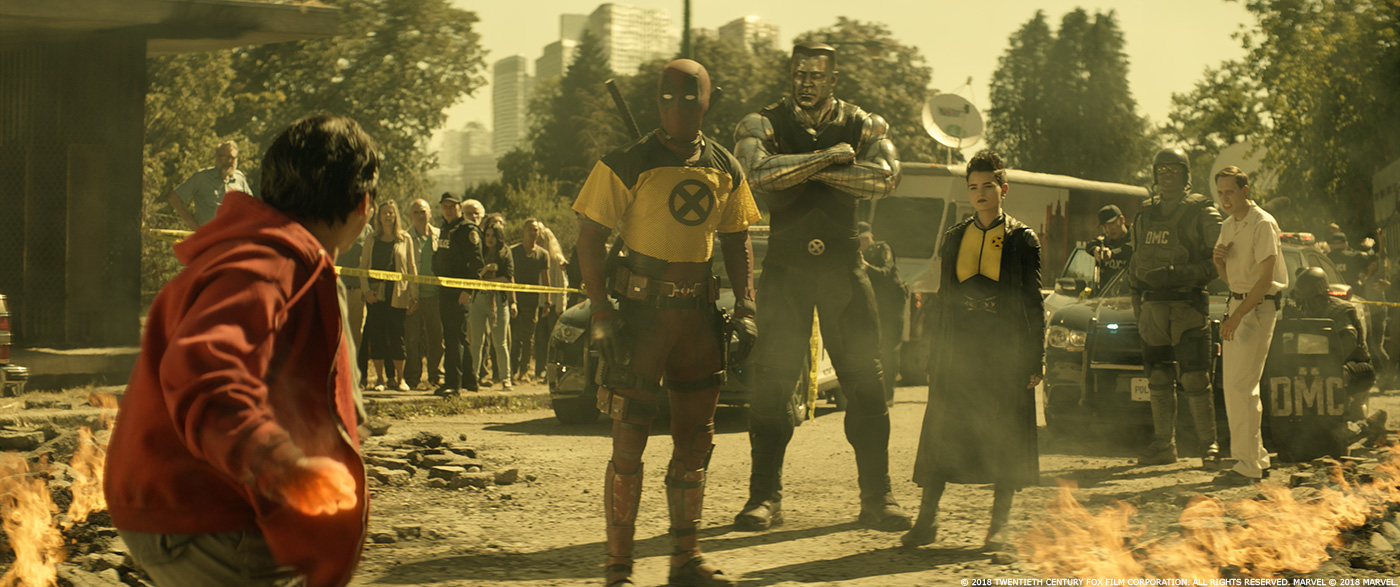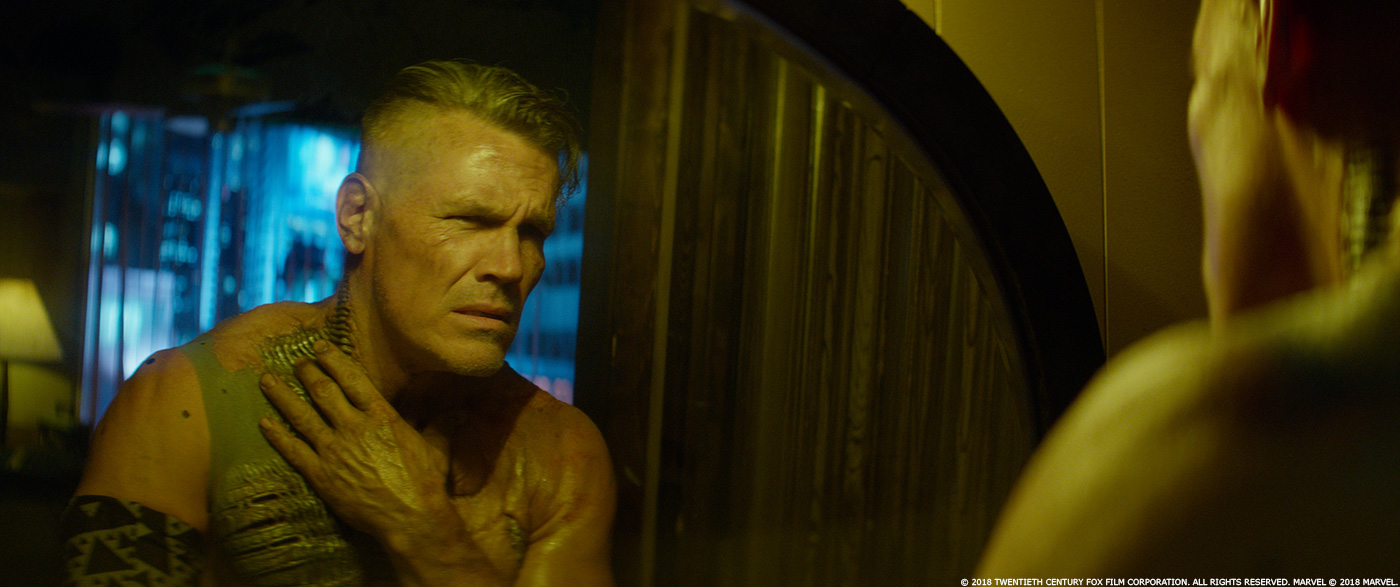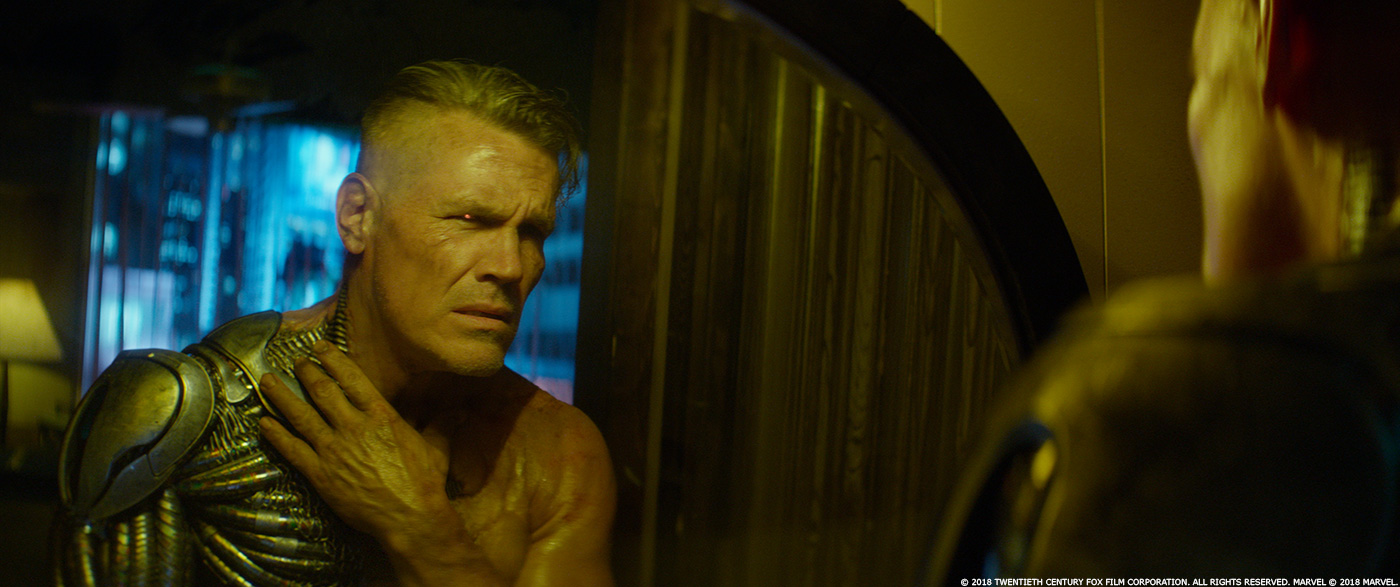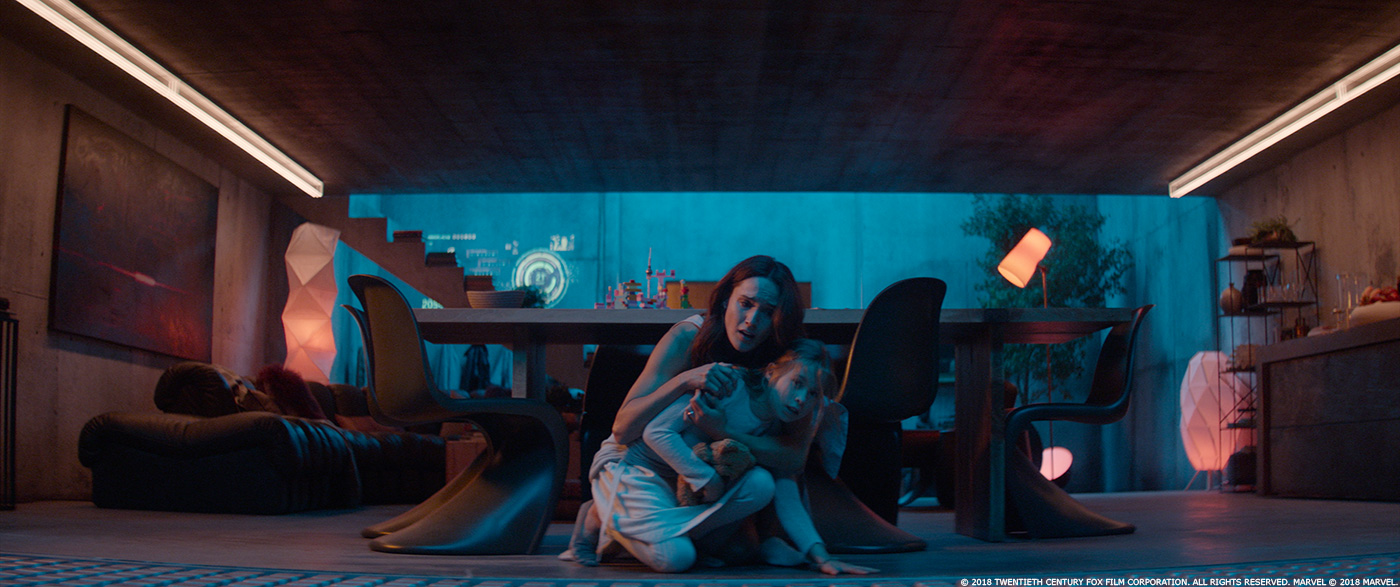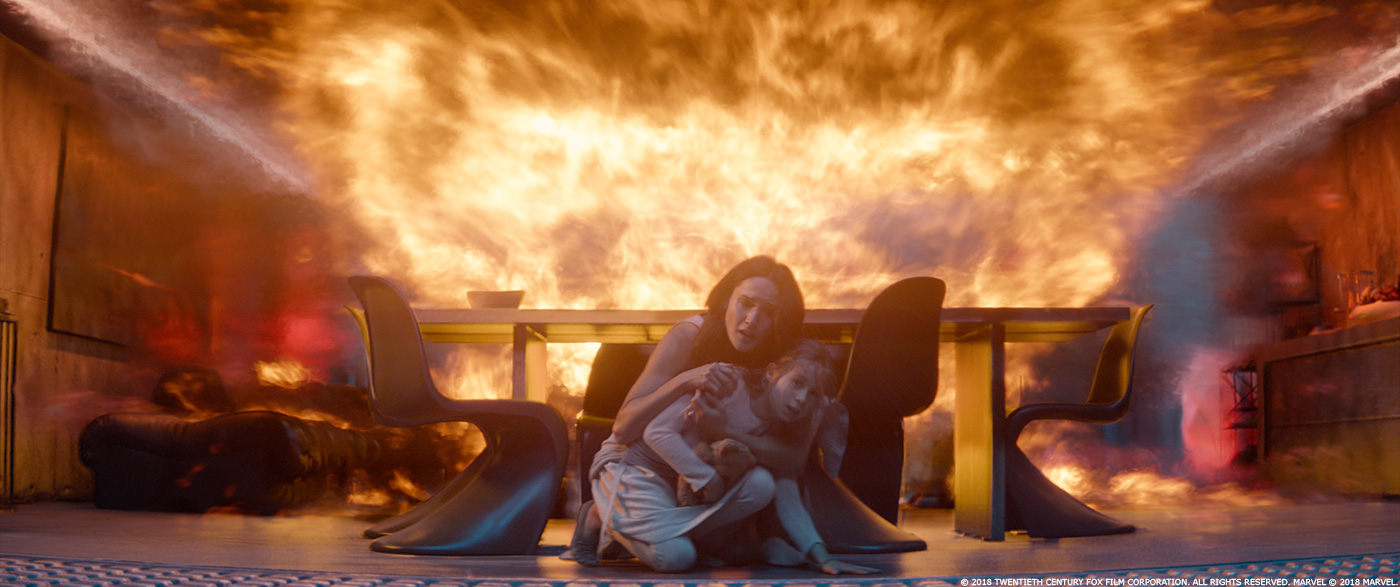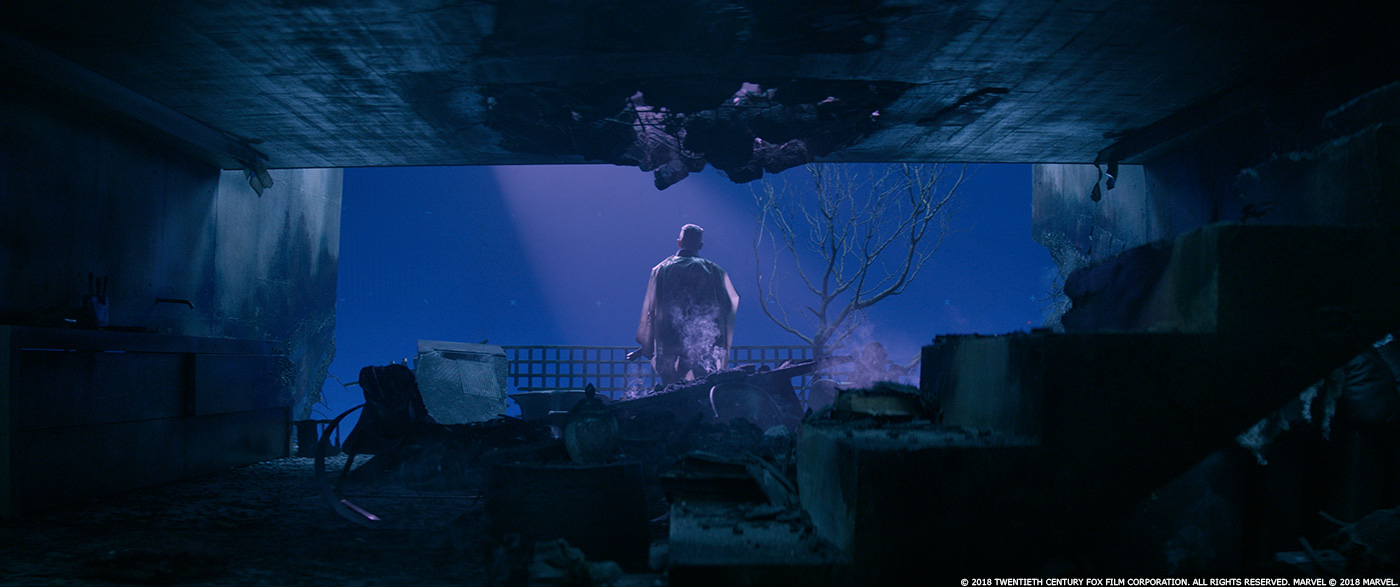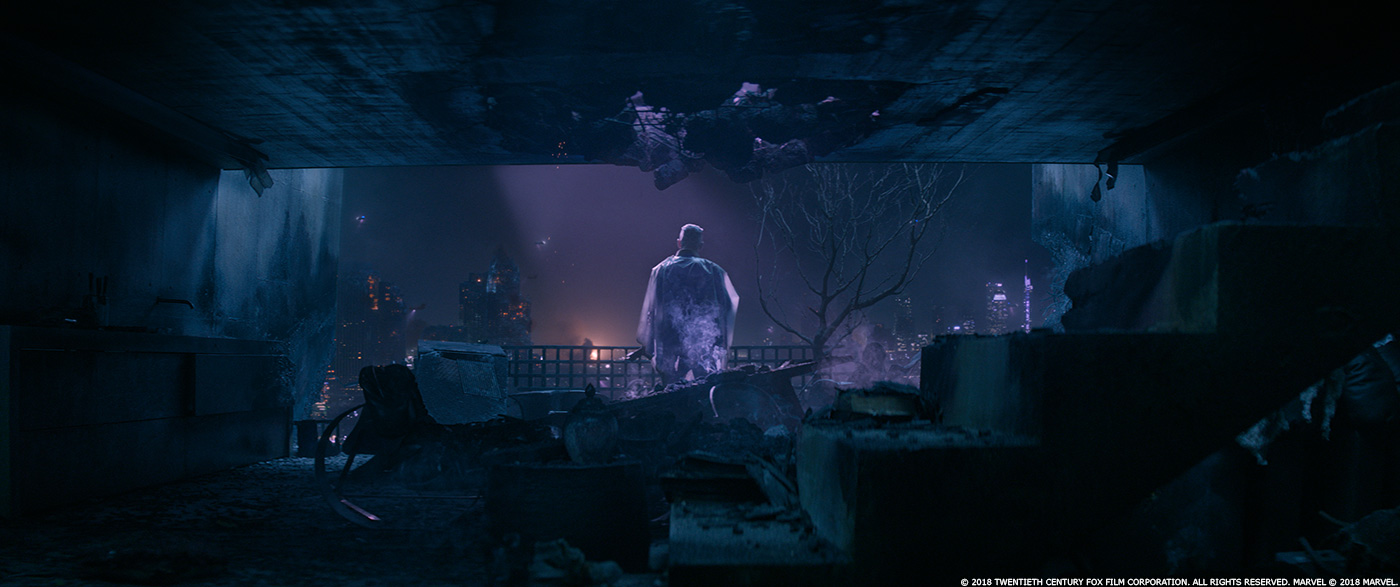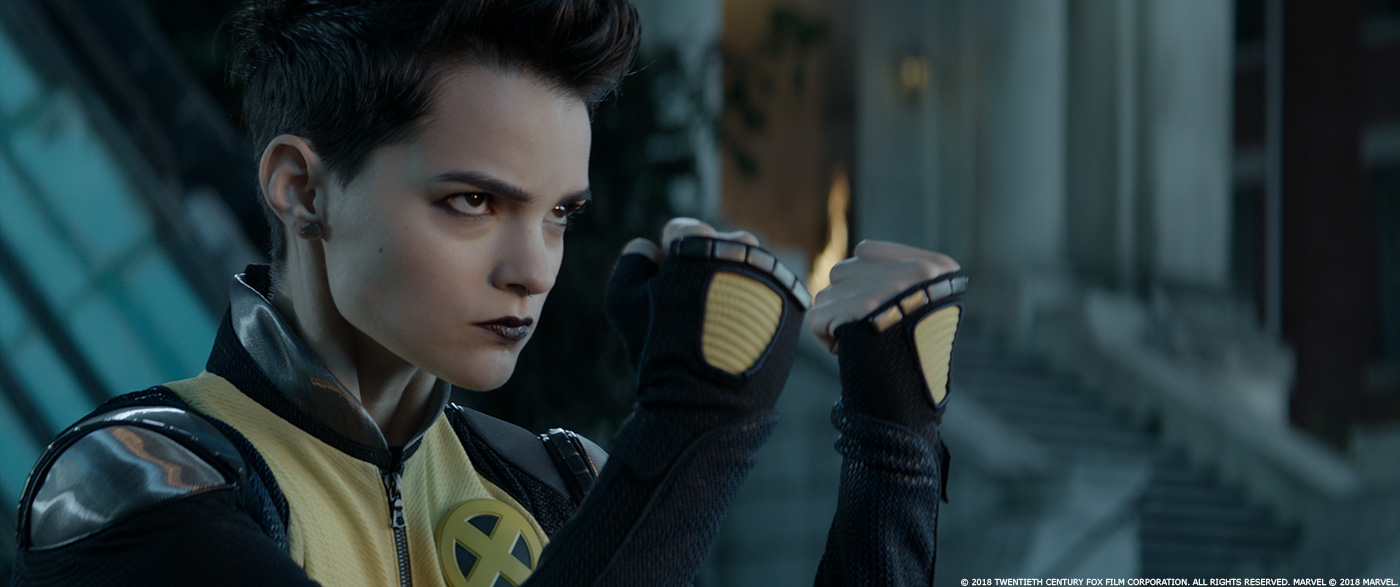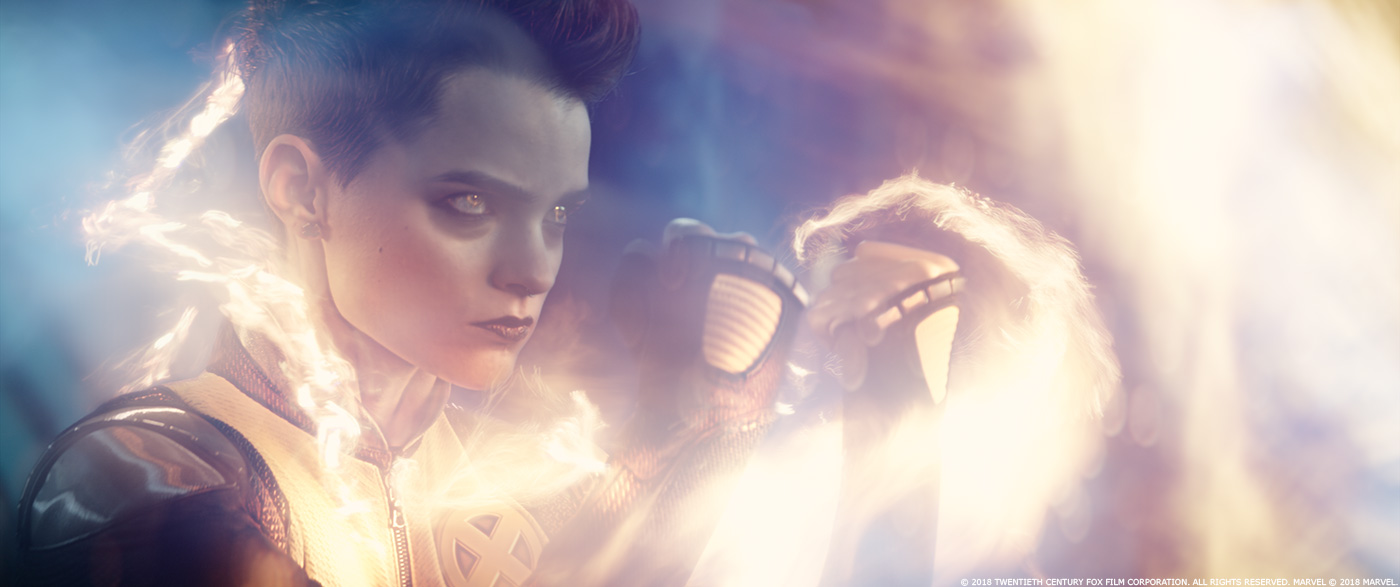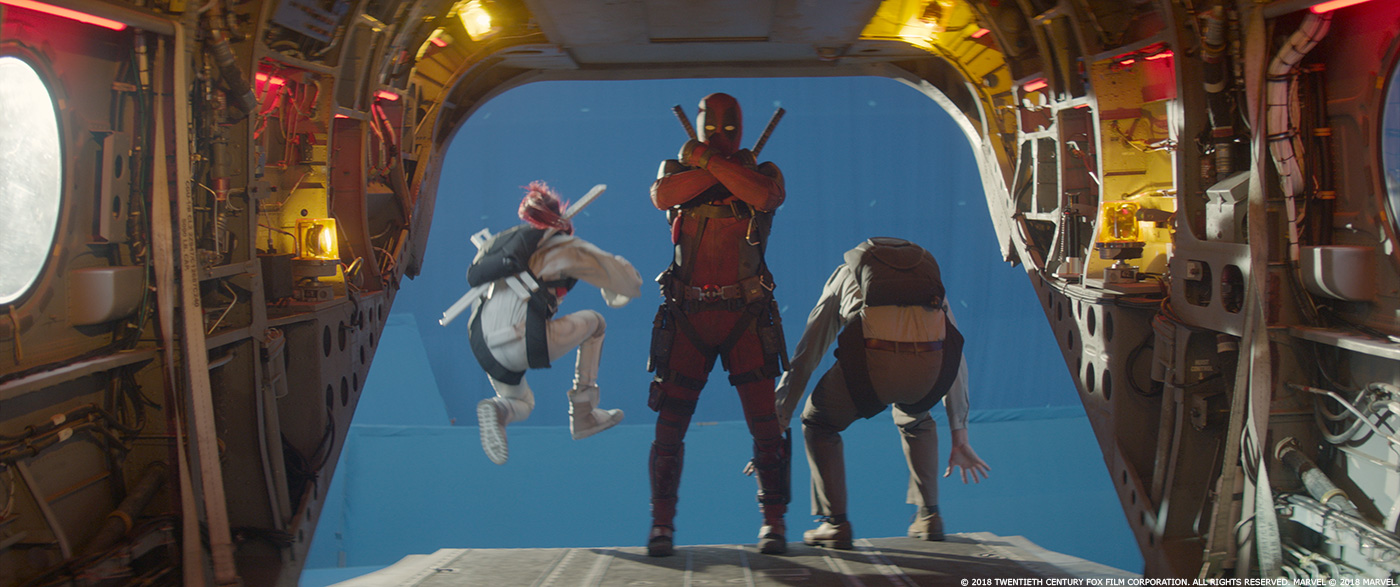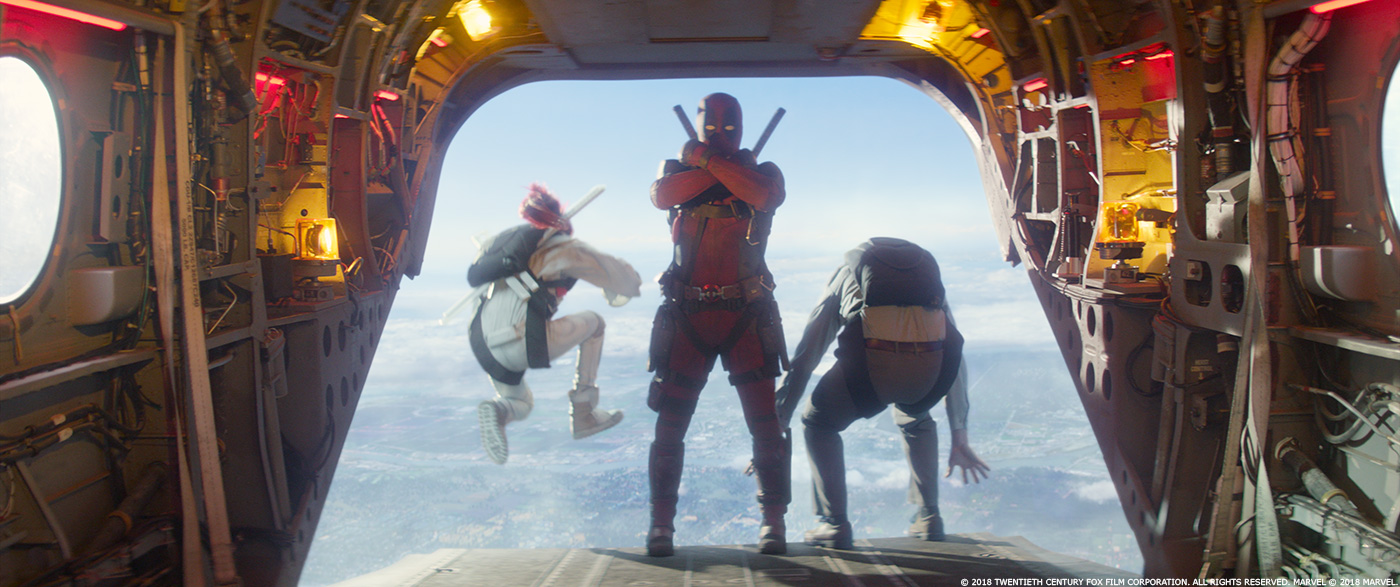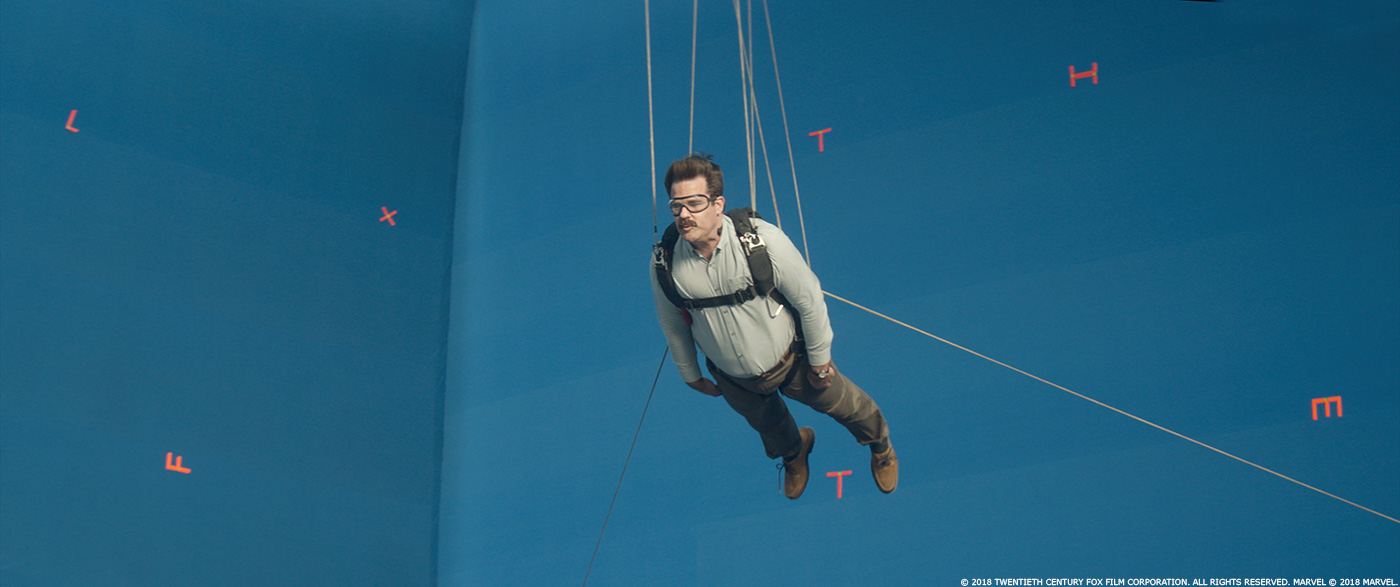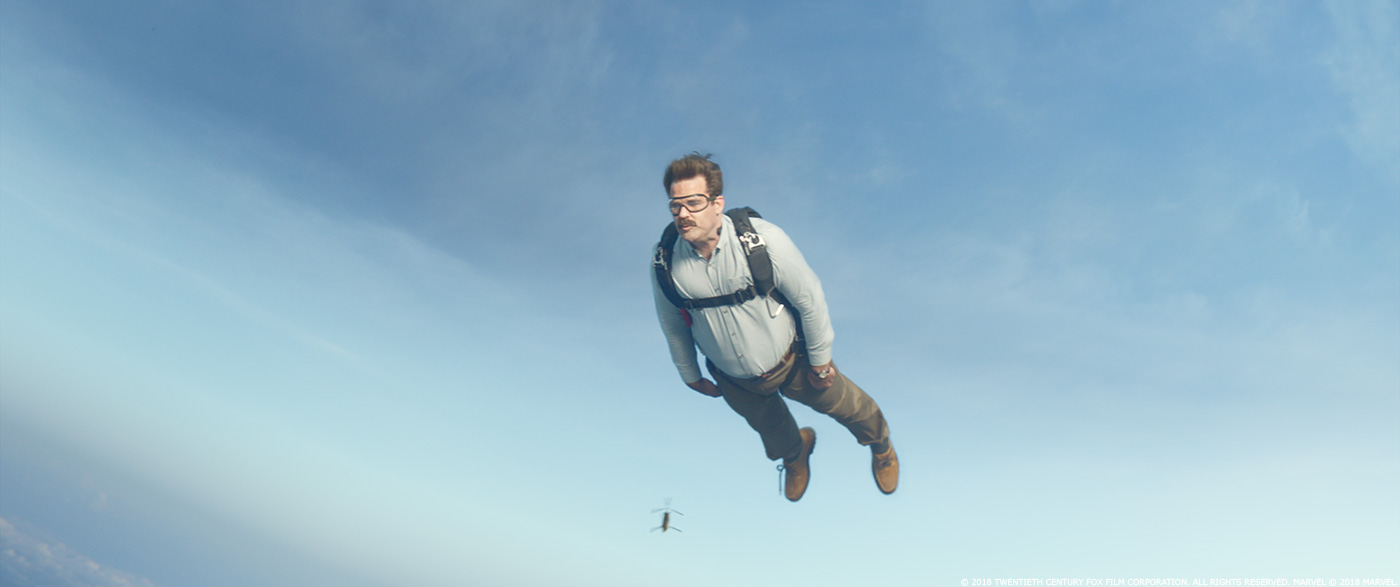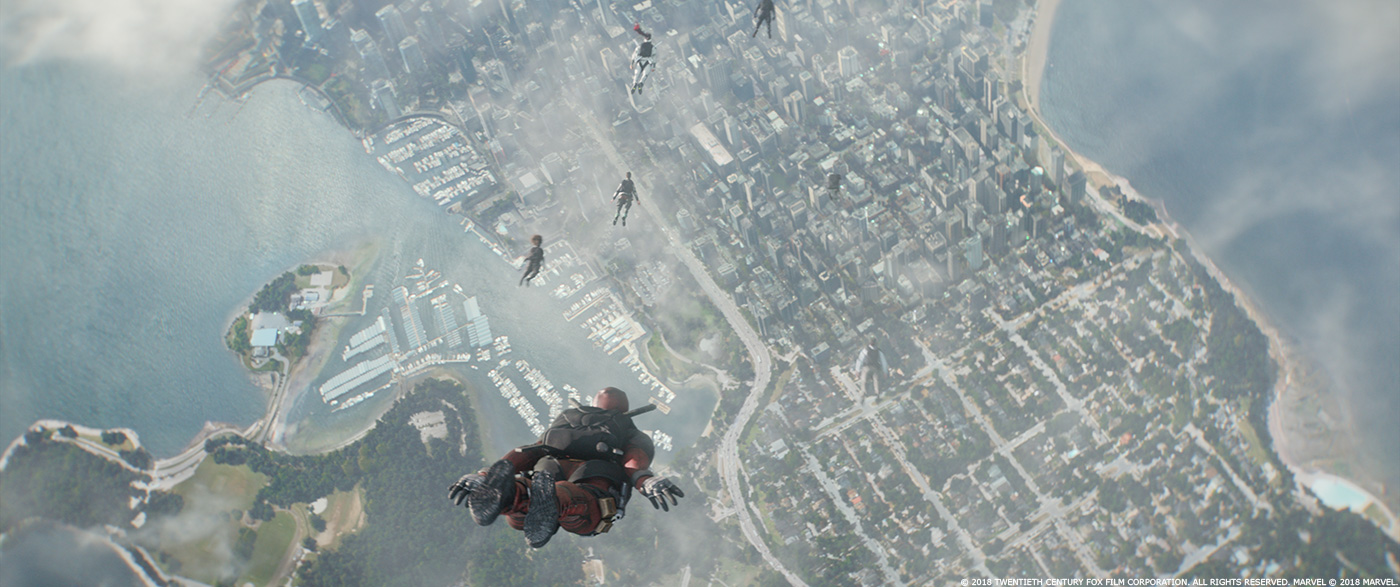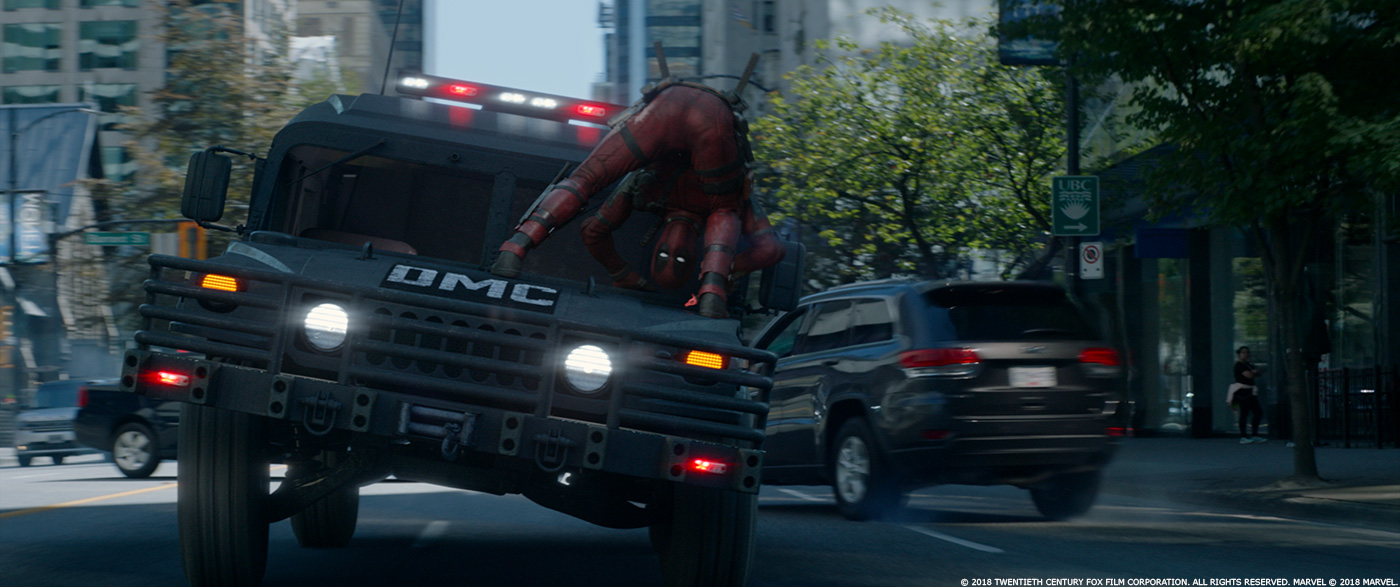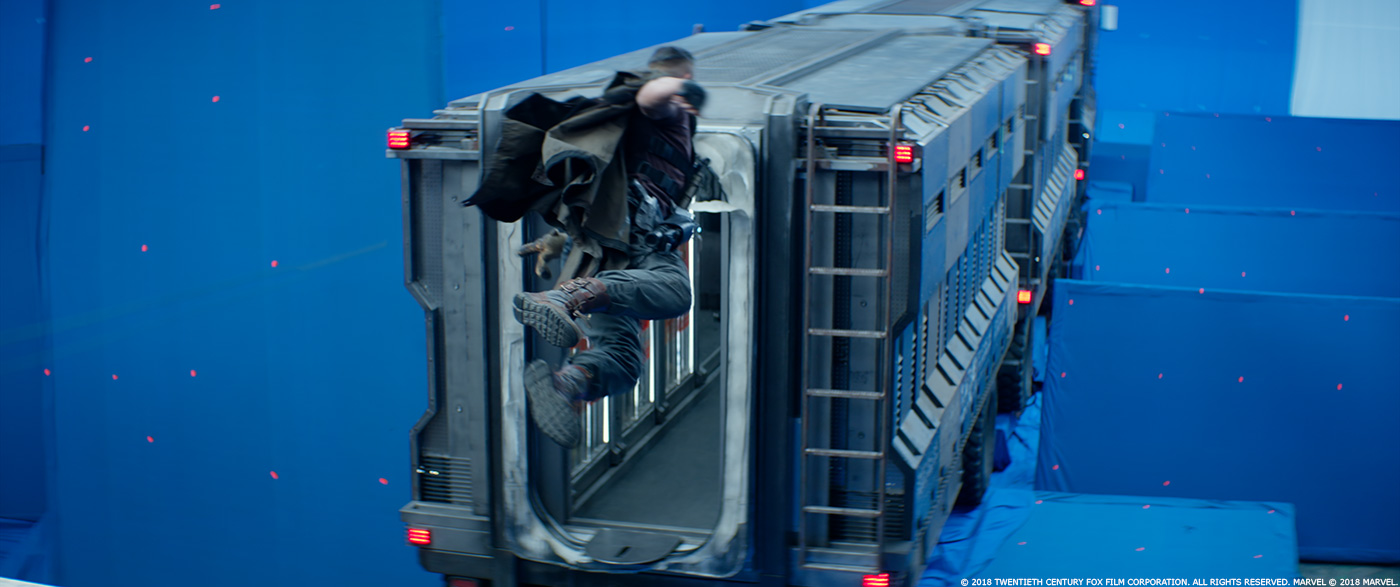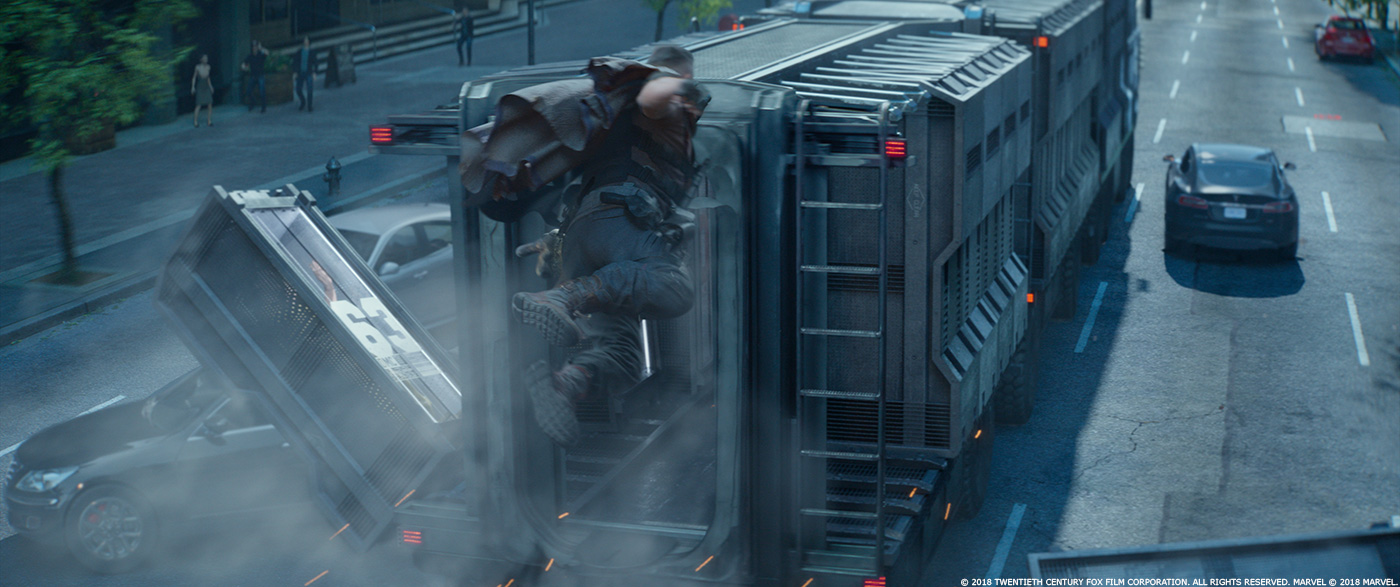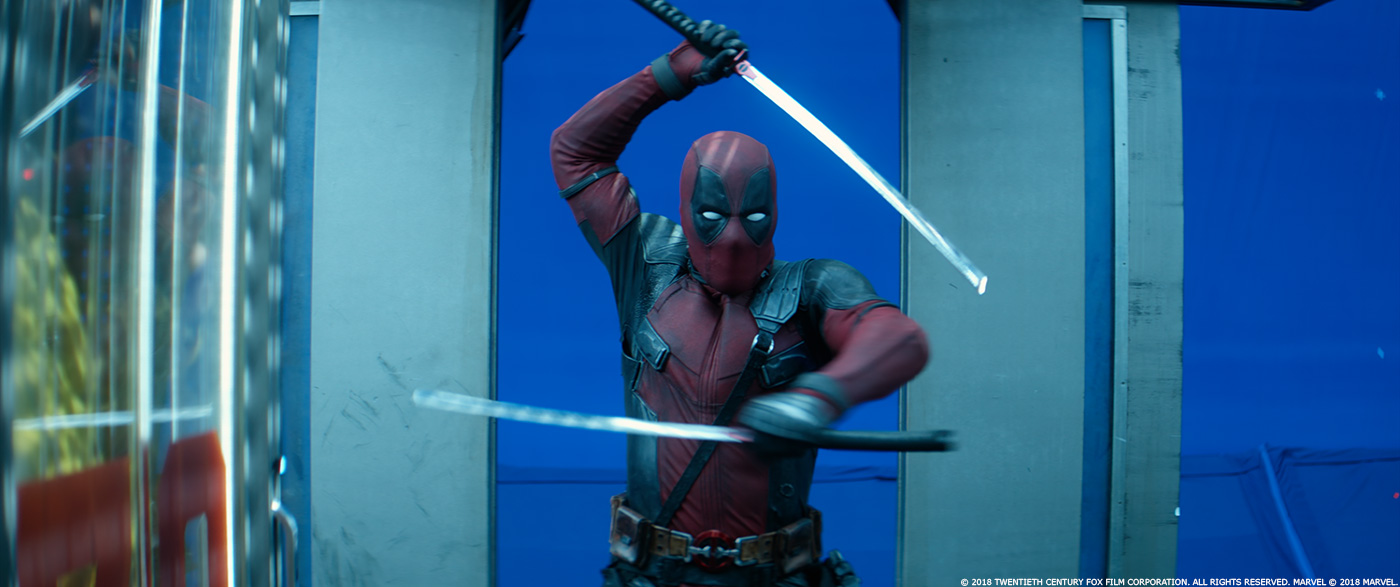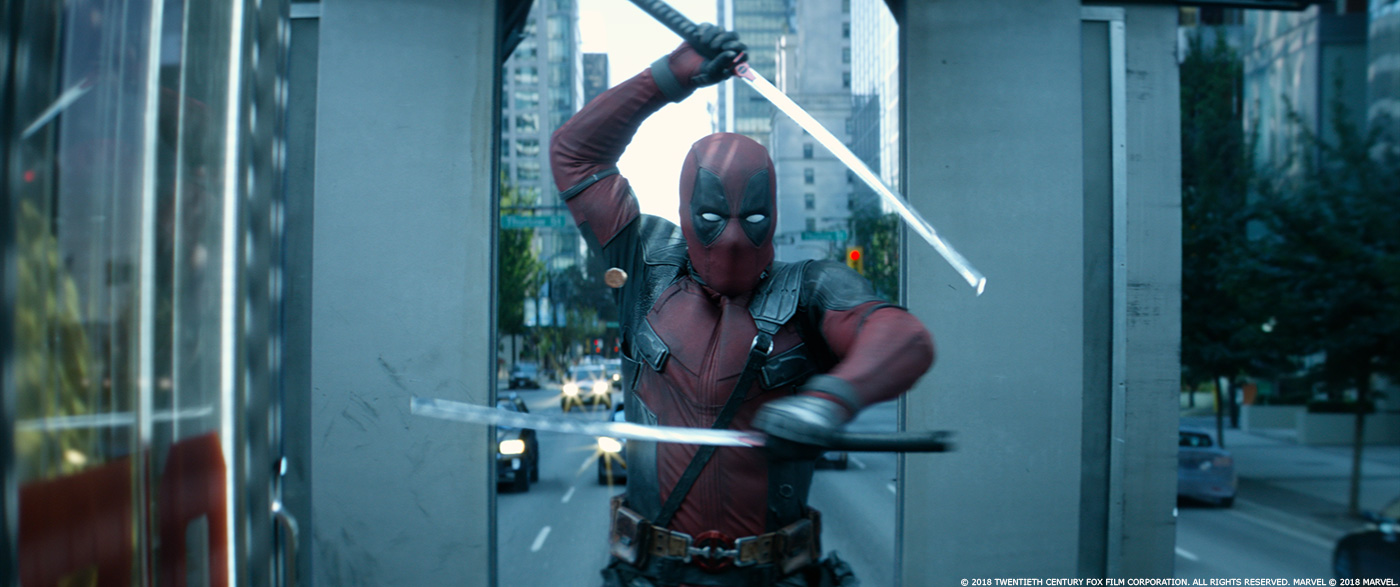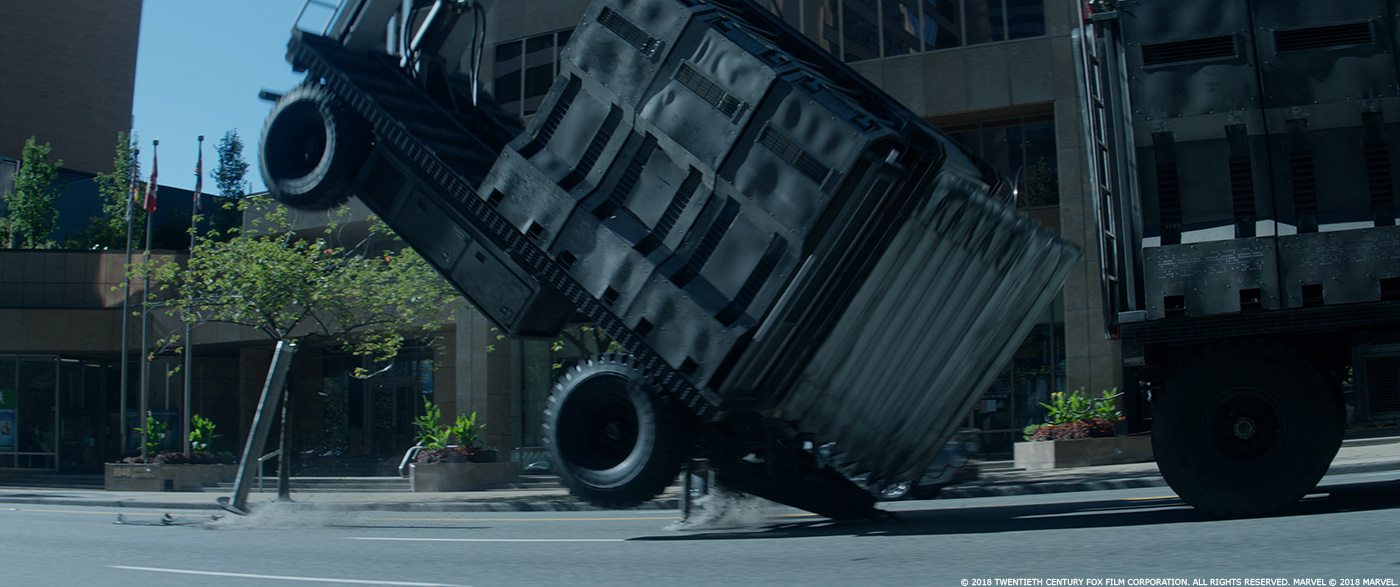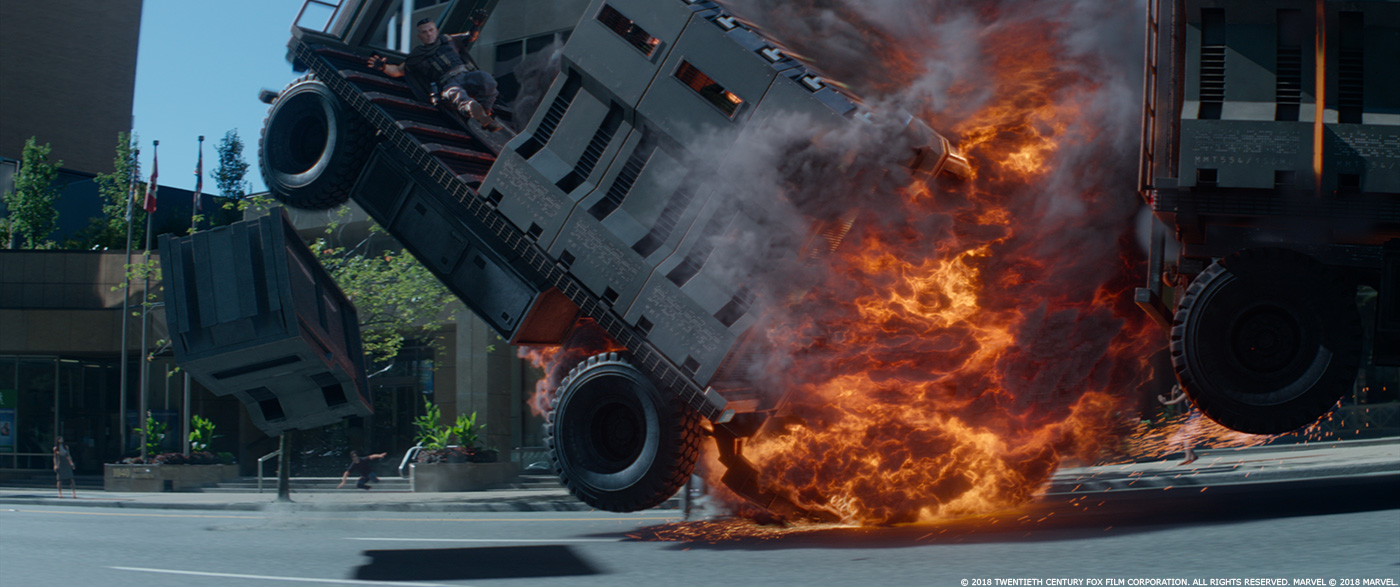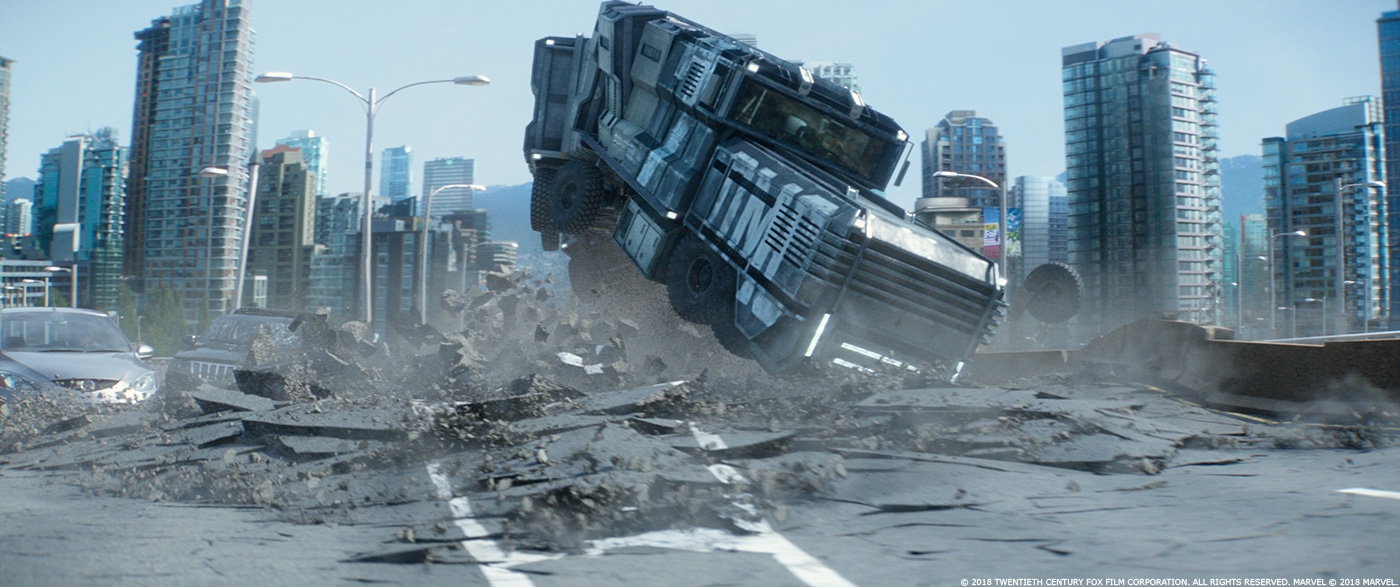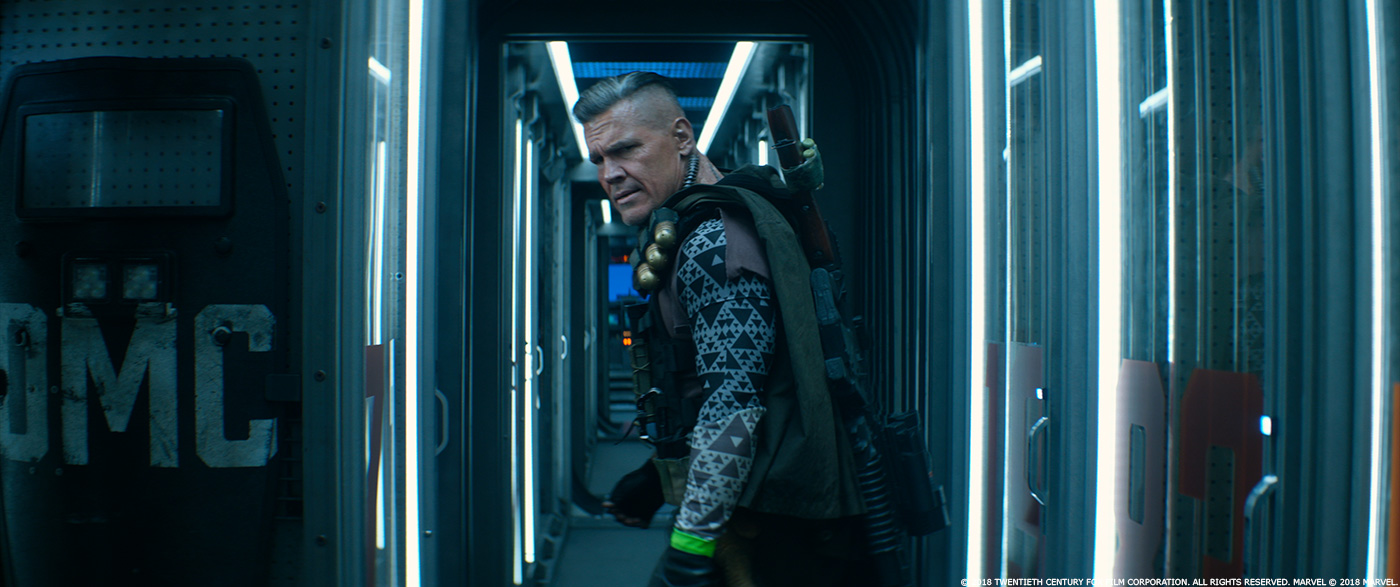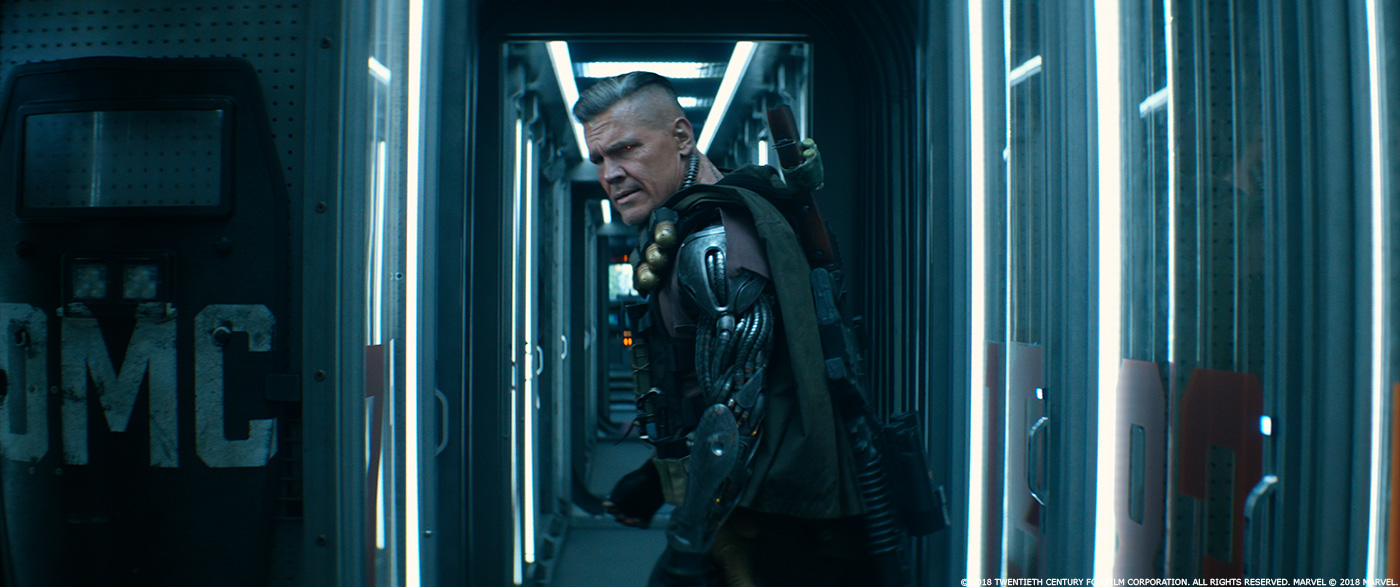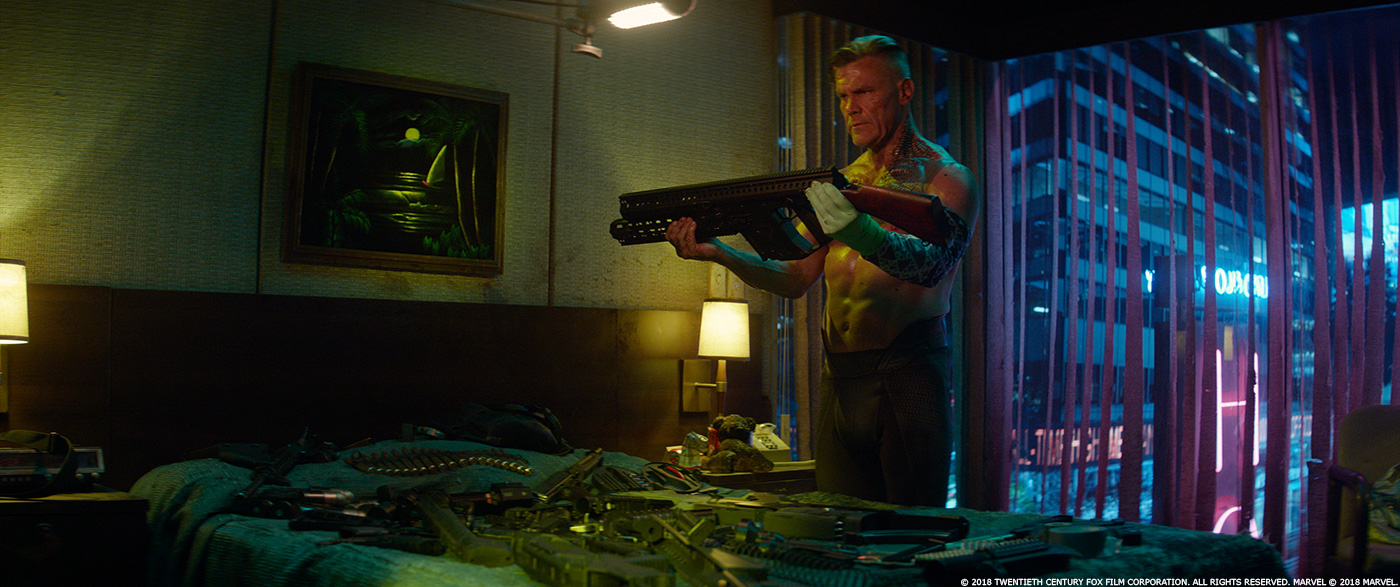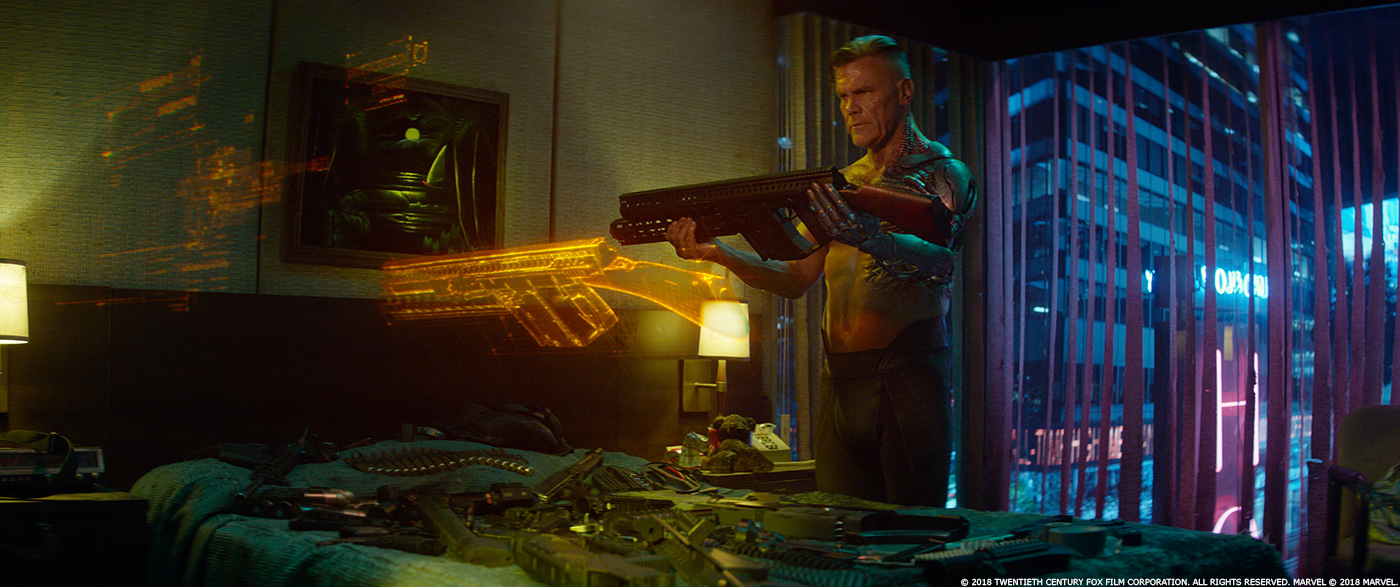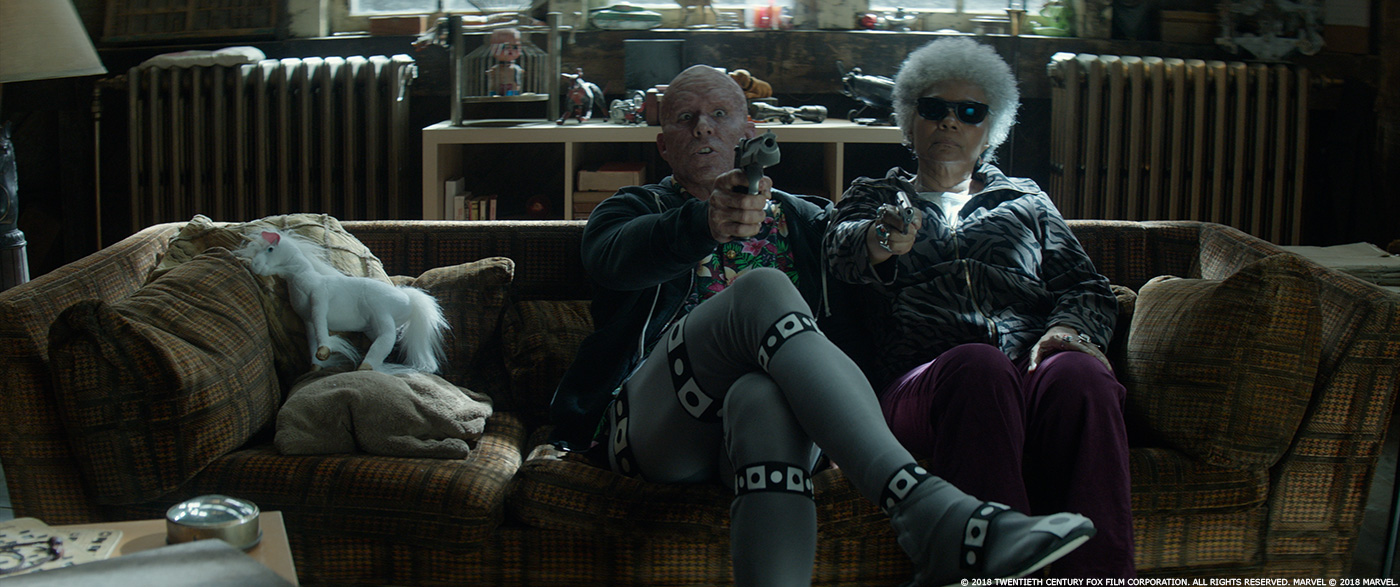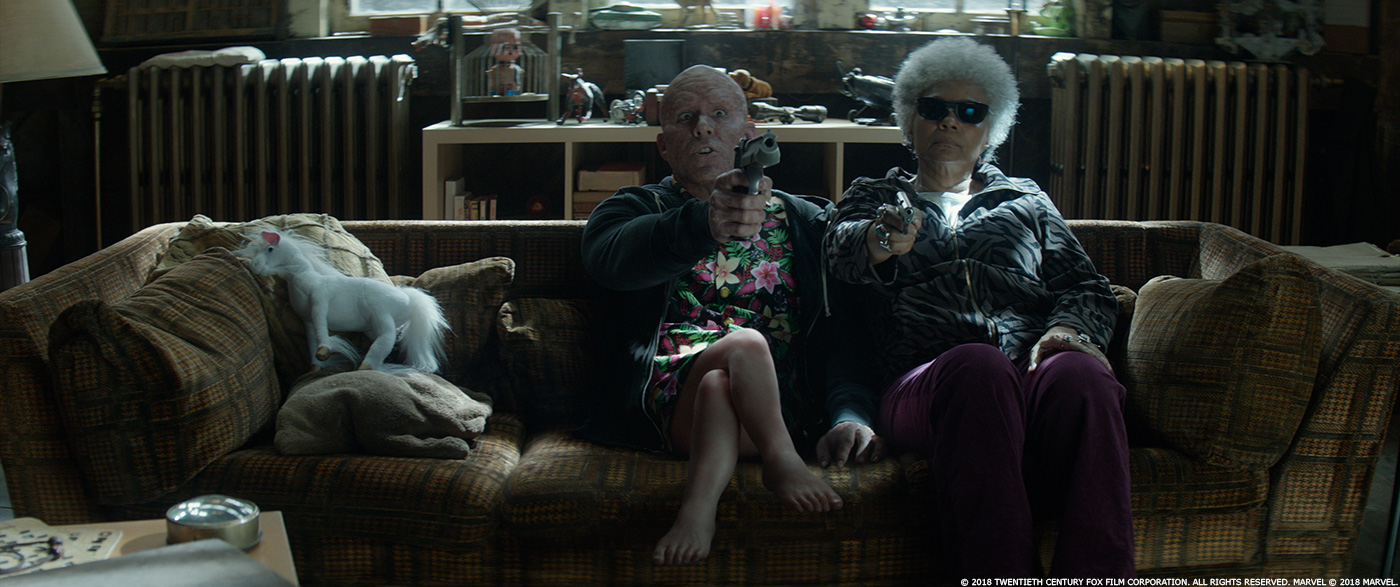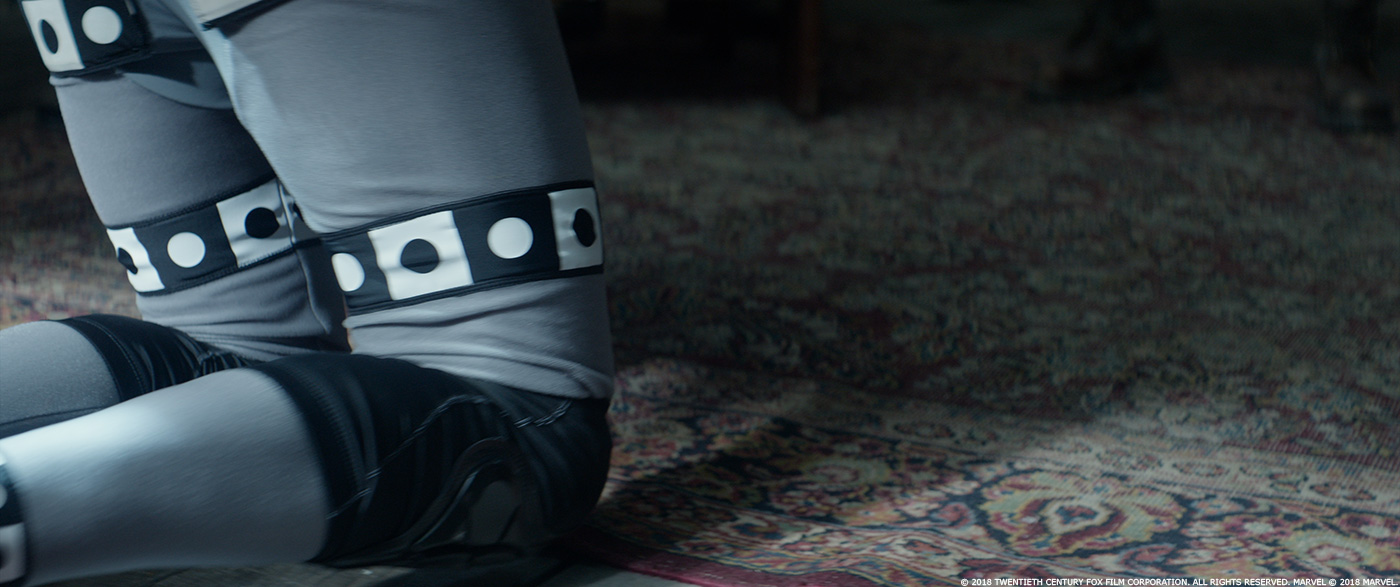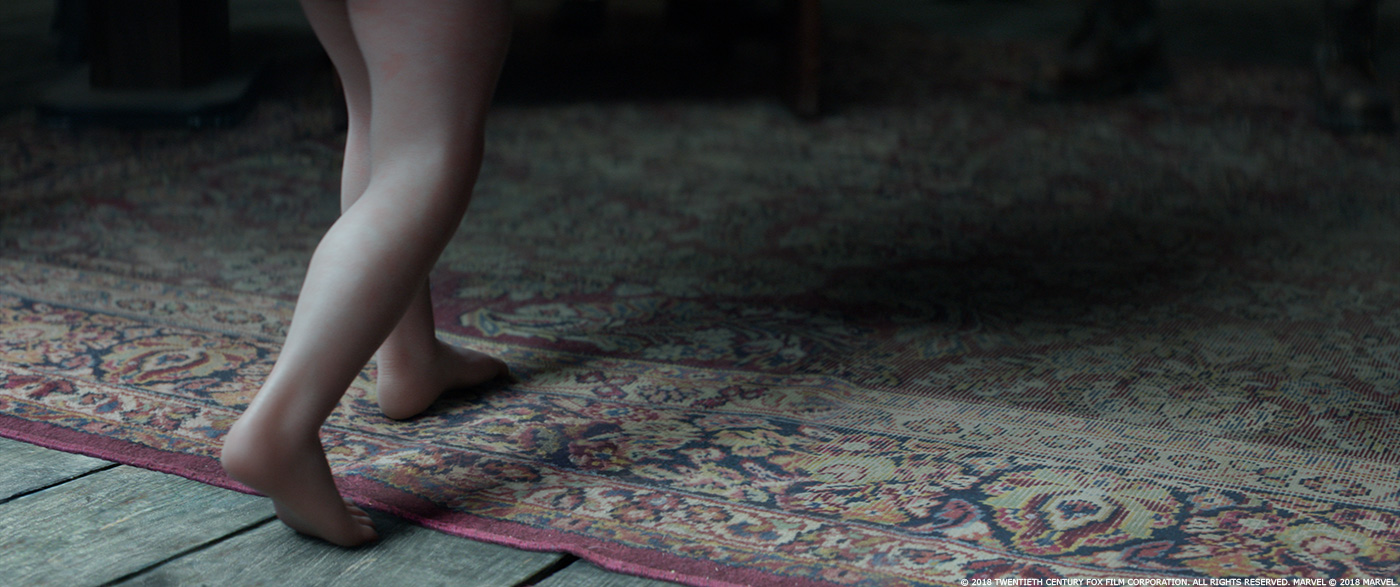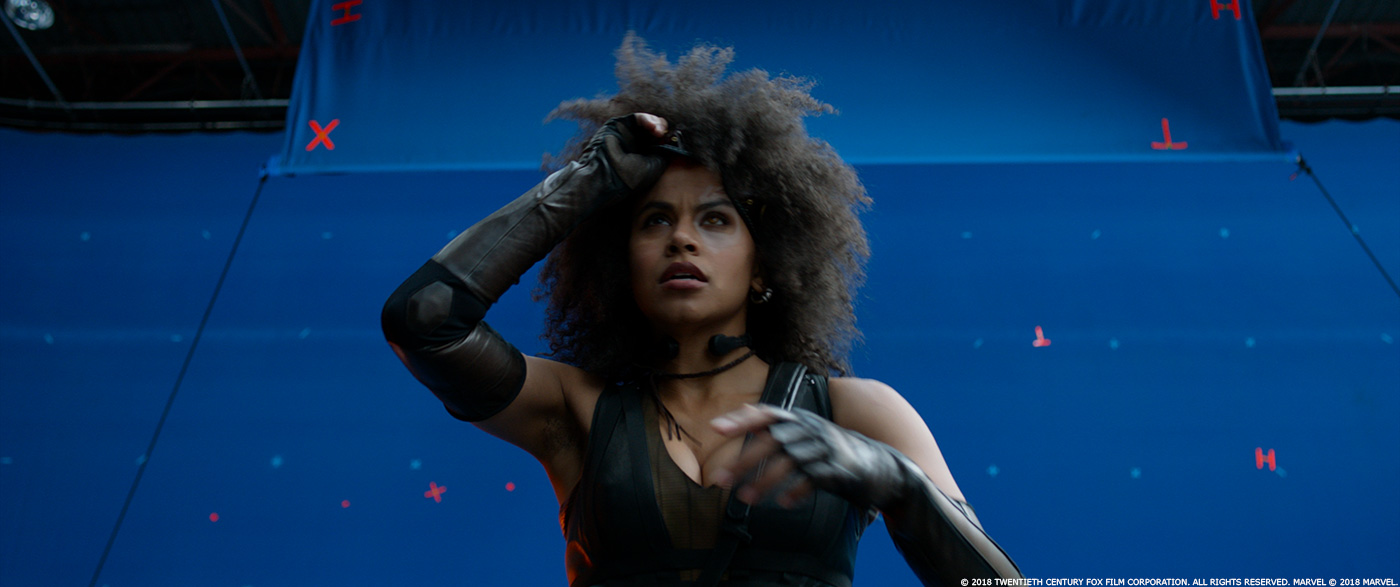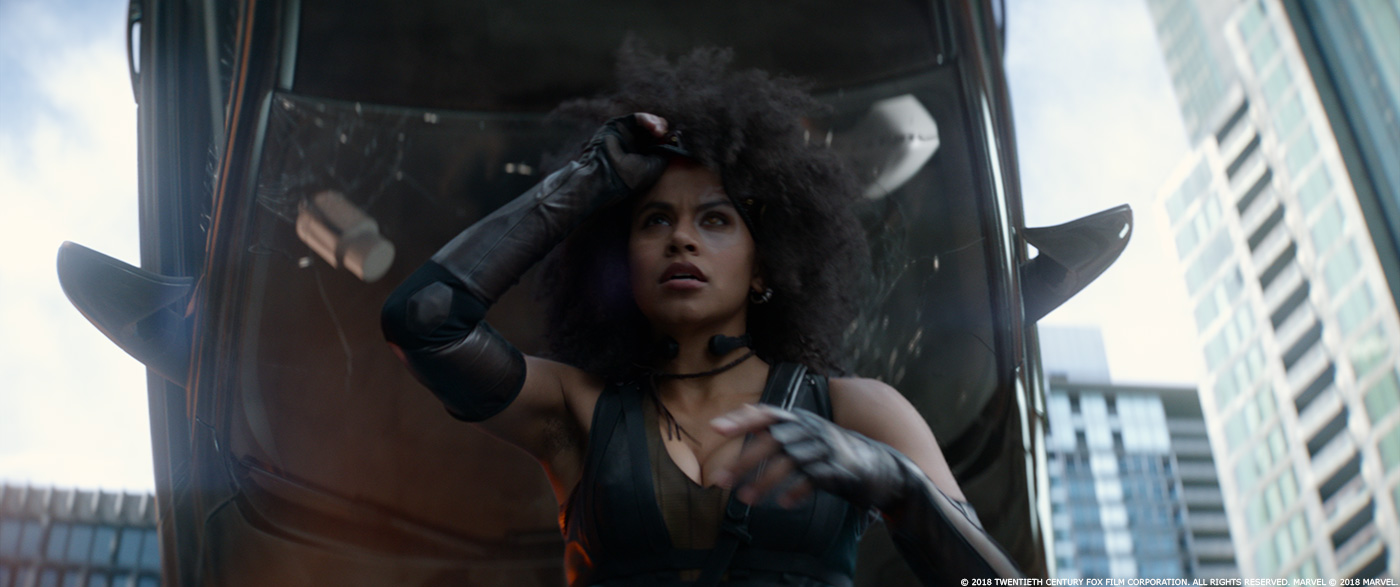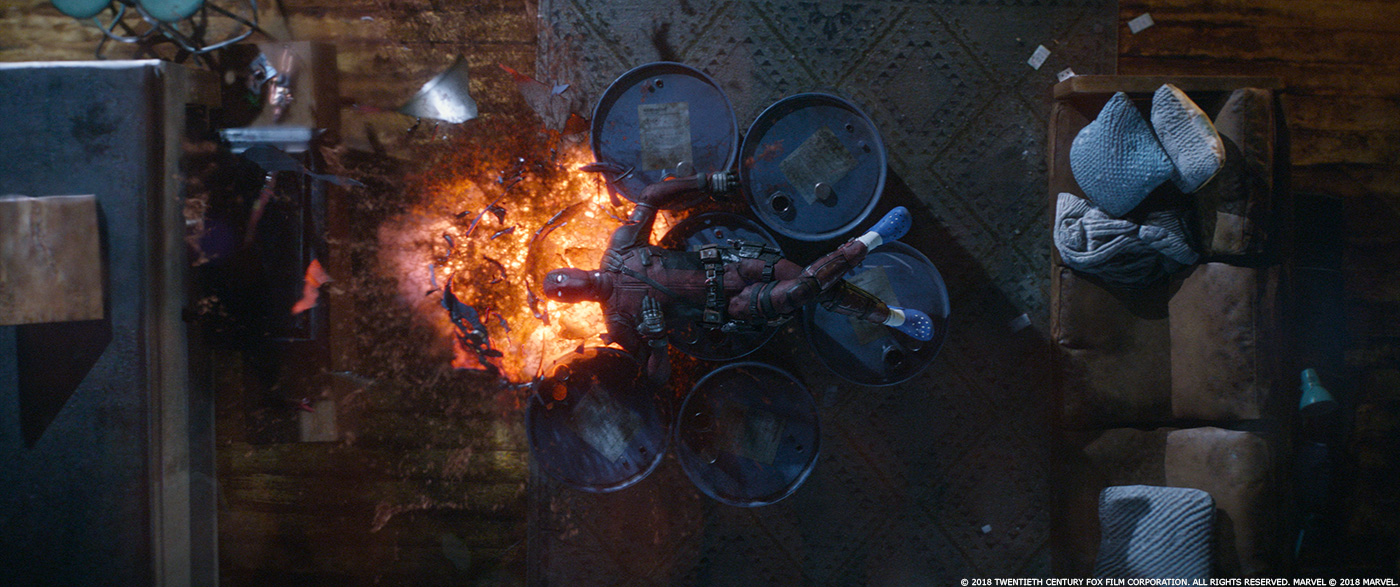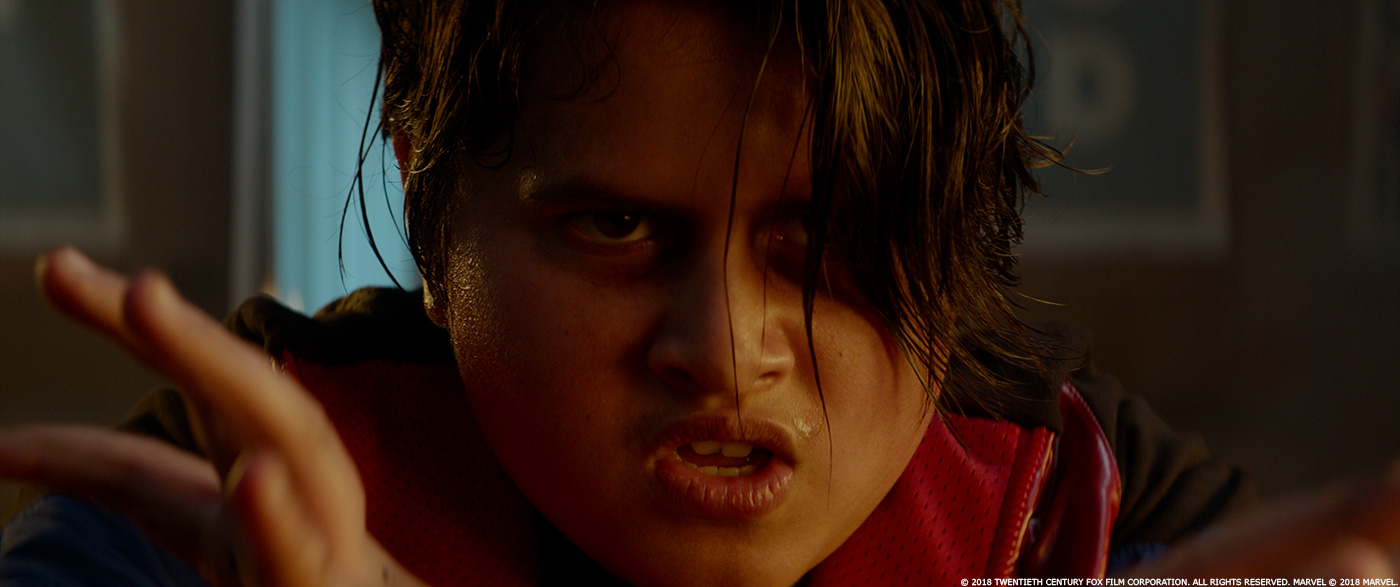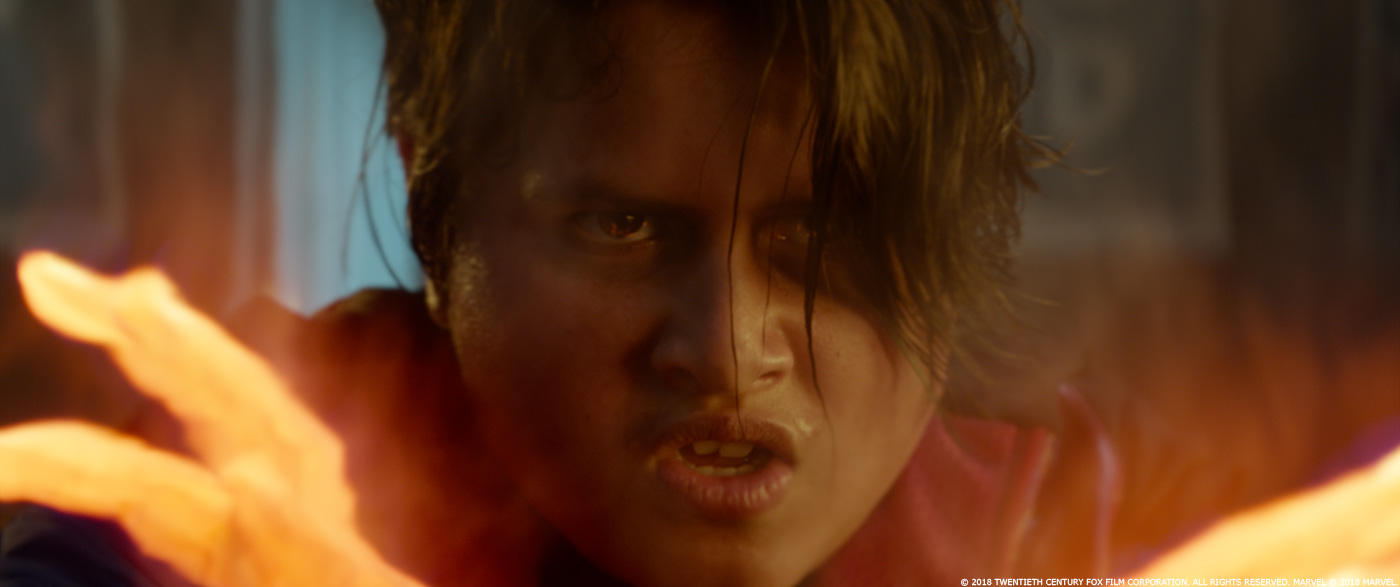Mike Brazelton began his visual effects career in 2000 at Asylum VFX. He then worked in various studios such as ESC Entertainment, Digital Domain and MPC before joining DNEG in 2011. He has worked on many films such as THE CURIOUS CASE OF BENJAMIN BUTTON, WATCHMEN, GODZILLA, STAR TREK BEYOND and THE MUMMY.
What is your background?
I was going to Art school when I met the owners of Asylum VFX. They offered me a role as an intern as a way to learn on the job. I took that job as an intern and worked my way up from there! I’ve been very fortunate to work around people that believe in sharing knowledge freely.
How did you get involved in this show?
I was finishing work on THE MUMMY when Dan Glass contacted DNEG about doing some concept/test work. I had some meetings where we talked about some of the key characters (Cable, Firefist) and how we could help them realize the characters through concept and animated tests. As the collaboration was going well I was asked to VFX supe the show and bid on sequences. DNEG ended up being the lead vendor on the film and we took on a large portion of the VFX work. (664 shots)
What was it like to be part of the Deadpool universe?
I’ve always been a fan of Deadpool so it was a real pleasure. From our first meeting I went to the comic book shop and started collecting as many graphic novels as I could. I really enjoyed learning more about the characters, as there is such an extensive history available in the books. I found working on an R rated film really freeing – the irreverence of the film had to be embraced.
How was the collaboration with director David Leitch and VFX Supervisor Dan Glass?
It was incredibly easy to collaborate with David and Dan. In my mind, if you understand the creative process it’s really easy to go from talking about an idea, and making it come to life. David really included us in the film, and it felt like we were creating the world together.
What were their expectations and approaches in terms of the visual effects?
The expectation was that this film is better than the first! David wanted the VFX to be photoreal and grounded in reality. We did a lot of work with the shoot and SFX to get the best results. We always shot as much reference material as we could, and did a lot of the creative heavy lifting early in the film. It was really important to front load as much as we could as the delivery schedule was very short after the shoot.
How did you organize the work with your VFX Producer?
Producer Anton Agerbo and I spent a lot of time breaking down the work in stages. Being sure that we had a constant flow of workable inventory for all departments. That means scans coming in, going through RPM, through all the early stages of VFX so we could keep the finals flowing. We focused on getting tent pole shots per sequence and locking down looks.
What are the sequences made by DNEG?
Parachute attacks – Convoy – Meet Firefist – Little Legs – Future Firefist – End Battle.
How did you create the various digital doubles for the parachute sequence and especially Deadpool?
We cyber scanned all characters and had a lot of onset photography and range of motion tests. The more hero a character was, the more work we put into the detail of ldev. We knew Deadpool would be featured close to camera so worked to that scale. We spent a lot of time up front with animation studies as well. I took sample shots from scenes while on set so people back at the studio could start working before scans came in.
Can you tell us more about the cloth simulations?
We had a lot of cloth simulation work in the parachute attacks sequence. We had some full CG shots that cut between blue screen shots with the actors. It was great to have the reference of how the cloth moved with the wind on set. To give us the control over the look we needed while being directable we added a new sim layering approach. This was especially helpful in turning around the parachute sim in the big Domino landing shot.
How did you create the city of Vancouver and its surroundings?
We did a lot of lidar and roundshot photo captures. We also built a 6-camera array using RED cameras with Canon L 24mm lenses. For the full CG sections we used the lidar and photography as a base and built from there. When we are inside the convoy, we shot on blue screen and matched in the array footage we shot. It was a lot of data to manage, but it worked out really well.
The parachute sequence ends pretty badly for the X-Force. How did you create the various terrible deaths?
We created our CG character assets, as we knew they could come into play with the deaths. Each character had some unique FX that needed lookdev as they each die a different way. We were lucky to know the scope of each death before we started shooting so we were able to work with SFX and get elements on the day as well. It was a lot of fun working on an R rated film and not having the limitations usually in place with PG ratings.
Deadpool and Domino attack a massive convoy. How did you approach this big sequence?
The sequence was broken up in beats. The approach as they get into the city involved a lot of DMP/CG environments. As we get into the city it involved a lot of CG vehicles, blue screens with array plates. We did a lot of planning up front with an eye to where we needed to shoot from to get data. We were up on a lot of rooftops gathering photography throughout the shoot.
How did you create the convoy vehicles?
There were 2 fully functional convoy vehicles created for the film. We were able to scan and photo the vehicles extensively. We had a lot of reference material to match to as the real convoy is used in many scenes.
Tons of destructions happen during this sequence. Can you explain the work involved?
Early in the convoy chase a lot of the explosions are shot in camera! We supported the shot SFX with a bigger explosion, more smoke, more debris. The beat where the bridge is destroyed is all FX. We looked at a lot of reference of earthquakes and high wind on bridges to make it look as real as we could.
How did you populate the streets of Vancouver with a crowd and cars?
DNEG has an extensive crowd and car library. When we shot the sequences in the city we had picture cars and extras to help fill out the traffic where we could. We filled in the areas for continuity with the 3D crowd and cars. We also used blue screen shot elements of crowd people that were closer to camera.
Cable is joining the fight. Can you explain in detail the process of creating his mechanical arm and his eye?
The arm started as concept that Production designer David Scheunemann’s team designed. We worked on top of that and took it as far as we could until it was time to model it. We knew we could never fully discover the arm until we got it fully functional in 3D. I really wanted the arm to work well with just a body track so we planned and modelled the pieces so they worked well with Josh’s natural body movements. The Kyle eye started in concept and moving tests as part of the pitch to get the show. Our concept artist Seungjin Woo created PSD layers that I took into Nuke and started animating them there. We got a basic look down that everyone loved, and then built geometry and basic animations that we could use as pre-sets. Most of the shots you see in the film are done in Nuke with those pre-sets.
Cable has a lot of cool toys such as a shield and time traveller. How did you create them?
We started with concept stills very early in the film. For the shield we looked at a lot of reference of electrical disturbances and worked that into the finished look. We always tried to base the way an effect works off of something that is grounded in physics. The time travel work we did a lot of our own discovery shooting reference plates before the sequence was shot. We had an A7s on set with a ronin stabilizer and ran around set shooting long exposure frames. We then took those into Nuke and played around with how we could stretch and pull time. The scene where he shakes his head we also worked that up shooting our own takes early on. It was important to understand how the effect would work before we shot it with Josh. The front-end work really paid off as we knew we had to shoot with 3 cameras, and we had a setup that worked pretty well when it came to do it for the film.
How does the various slow-motion shots affect your work?
The phantom cam creates a lot of issues starting with the look of the camera. It doesn’t match into the look of the Alexa and doesn’t have the range. As it inter-cuts with the Alexa footage it took a lot of work to get them working well together. Also it generates a ton of frames, so you are doing a lot of matchmove/roto! I love the end result and it’s all worth it.
Later in the movie, Deadpool is cut in two. Can you elaborate on his “new” legs?
The little legs sequence is all about Deadpool growing back his new legs. He was ripped in half by Juggernaut in the previous sequence, so we have this section of the film where they aren’t quite grown in yet. It’s a really funny sequence that we based the legs off a 5 year old. There is a basic instinct scene in it that will have everyone laughing!
What was the main challenge with his little legs?
The main challenge was understanding the character and conveying that in a photo real way. The animation and lookdev of the legs took a lot of time and attention. There is a ton of subtle detail in that sequence that really pays off in the end product.
Which sequence or shot was the most complicated one to create and why?
The convoy sequence was the most difficult in many ways. We had a lot of bluescreen material to cut with shot plates. A lot of times we start on a shot that has a real convoy and Deadpool actor on a moped to a fully CG version in the next shot. The convoy sequence covers a lot of ground, from starting up high parachuting in to blowing up a bridge and falling through it.
Is there something specific that gave you some really short nights?
There is a shot where Domino parachutes into the city and lands above a tunnel. That shot happened very late in the show, we had about 8 weeks to complete it. We had to do reshoots to film portions of the Domino performance and create a full CG city as the camera continuously rotates around her for over 600 frames. We used N-cam to help guide the performance shoot and it all came together really well.
What is your favourite shot or sequence?
The first shot in the film we did is of Deadpool blowing himself up. It was a lot of fun to get to “kill” Deadpool.
What is your best memory on this show?
I really enjoyed being on set, it was a great experience and from the director down I was made to feel welcome.
How long have you worked on this show?
Almost exactly 1 year!
What’s the VFX shot count?
664 shots + some DVD work we are currently wrapping.
What was the size of your team?
Across all sites close to 600 people worked on the project at DNEG, counting artists and production support.
What is your next project?
TBD!
What are the four movies that gave you the passion for cinema?
2001: A SPACE ODYSSEY, BLADE RUNNER, ALIENS and THE MATRIX.
A big thanks for your time.
// WANT TO KNOW MORE?
DNEG: Dedicated page about DEADPOOL 2 on DNEG website.
© Vincent Frei – The Art of VFX – 2018


